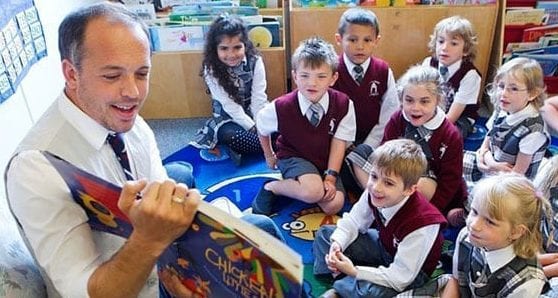 The best educators could teach business leaders a thing or two about body language.
The best educators could teach business leaders a thing or two about body language.
Pygmalion in the Classroom, one of the most controversial publications in the history of educational research, showed how a teacher’s expectations can motivate student achievement. This classic study gave prospective teachers a list of students who had been identified as “high achievers.” The teachers were told to expect remarkable results from these students, and at the end of the year, the students did indeed make sharp increases on their test scores.
In reality, these children were not high achievers, but had been chosen at random from the entire pool of pupils. It was the teachers’ belief in their potential that was responsible for their exceptional results; a belief that was communicated not directly (the students were never told they were special), but subliminally through nonverbal cues.
In much the same way, a leader’s expectations of employees’ potential (as expressed by that leader’s nonverbal behaviour) can also play a key role in determining how well people perform at work.
Body language is the management of time, space, appearance, posture, gesture, touch, expression, eye contact, and vocal prosody – how you say what you say. From a body language perspective, teachers (and business leaders) send two sets of signals.
One set of signals conveys status, power, and confidence. You send these signals by standing tall, using steepling or palms-down hand gestures, keeping your head straight, minimizing facial expressions, gesturing between your waist and shoulders, and speaking in a deep and forceful tone of voice.
There are many occasions where educators and leaders would want to emphasize their competence and authority. But when trying to engage and motivate students or staff, these signals usually send the wrong message.
The second set of nonverbal signals conveys empathy, likeability, friendliness, and inclusiveness. These body language cues include a relaxed posture, smiles, open palm gestures, forward leans, vocal variety – and the eye contact, head nods and head tilts that nonverbally show approval and encourage others to keep speaking.
Teachers who thought they had the high-achieving pupils used more of these warmth signals, and in doing so encouraged the exceptional performance they secretly expected. It’s something that more business leaders should try.
Troy Media columnist Carol Kinsey Goman, PhD, is an executive coach, consultant, and international keynote speaker at corporate, government, and association events. She is also the author of STAND OUT: How to Build Your Leadership Presence.
The views, opinions and positions expressed by columnists and contributors are the author’s alone. They do not inherently or expressly reflect the views, opinions and/or positions of our publication.


